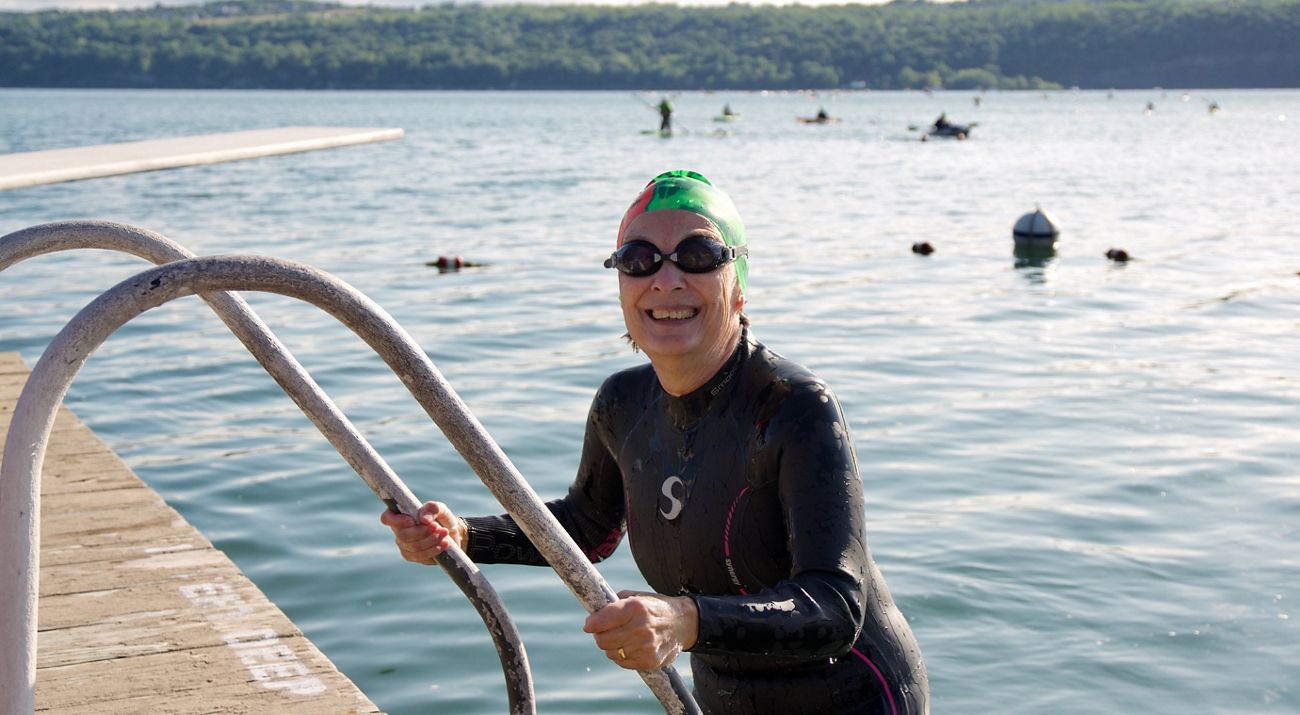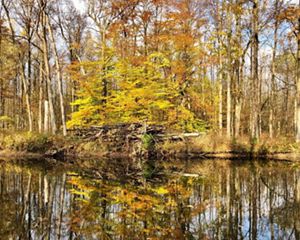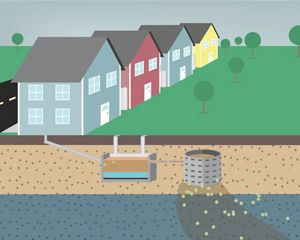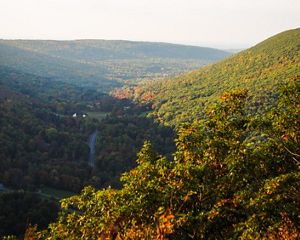Swimmin’ to a Clean Water Future in the Finger Lakes
Phosphorous and nitrogen pollution pose a threat to the region’s water quality. Here’s what we’re doing to help—and how you can take part.
Every summer, more than 300 women in brightly colored bathing caps make their way to Women Swimmin’, a 1.2-mile fundraising event in Cayuga Lake near Ithaca, New York. The benefit raises critical funds for Hospicare & Palliative Care Services, an organization that provides hospice care and grief support in New York’s Finger Lakes region. But toxic algae blooms that are becoming more frequent and widespread in the region’s lakes have organizers increasingly on edge.
Women Swimmin’ is not just a celebration of women’s athletic prowess. It is also a memorial to loved ones who’ve died of cancer and other diseases. In the style of open-water racers who write their race numbers on their caps and limbs, “participants write names of loved ones they’ve lost on their bodies or their swim caps,” explains Sara Worden, Hospicare’s acting director of development and community relations. Though “we’ve never had to cancel or reroute the swim” because of harmful algal blooms (HABs), she continues, “it all comes down to the morning of the event.” So much so that the organization now sends kayakers out early that day to scout for the toxic, aquatic plumes. Says Worden, “The health of the lake has a big impact on the health of our organization and our ability to deliver services.”
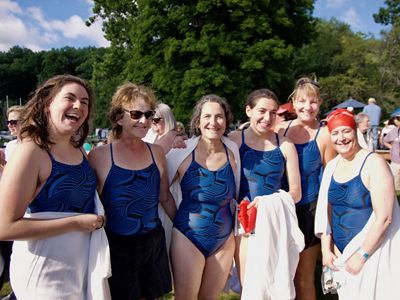
The Increasing Threat of Harmful Algal Blooms
Harmful algal blooms are a problem not only for Hospicare, but for New Yorkers as a whole—kids practicing their backstroke in what were once reliably clear waters, clammers and oyster farmers, shoreline restaurants, drinkers of our public water supplies. These toxic blooms have threatened businesses in fields like tourism and recreation; put pets and wildlife at risk; and, of course, dampened the joy of swimmers of all ages and kinds. In fact, the number of lakes and ponds where algal blooms have been reported has increased from 64 in 2012 to 216 in 2019. In and around the Finger Lakes, the Adirondacks and Long Island, these blooms are arriving earlier, lasting longer and becoming more widespread.
Quote: Sara Worden
The health of the lake has a big impact on the health of our organization and our ability to deliver services.
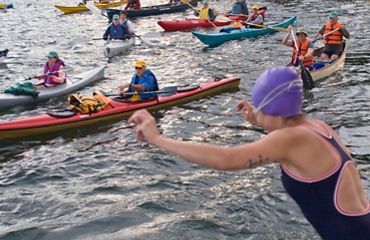
When algal blooms close beaches and limit boating, fishing and swimming, there can be significant economic impacts for local communities. “I get calls quite a bit from people who want to rent a place on [Cayuga Lake], who, when they hear about the blooms, say ‘We come every year. But I guess we’re not coming this year,’” says Eileen O’Connor, director of environmental health at the Cayuga County Health Department. “When you have an economy that’s dependent of tourism, that means a lot.”
What Causes Harmful Algal Blooms?
To prevent and decrease the effects of harmful algal blooms, it’s important to first understand the causes. In the Finger Lakes, these include the presence of excess nutrients such as phosphorus and nitrogen in the water, says Olivia Green, The Nature Conservancy’s Finger Lakes water quality specialist. Nutrient-heavy topsoil, chemical fertilizers from lawns and farming and sometimes manure can make their way into the region’s lakes, rivers, streams and ponds.
Conventional septic systems contribute as well. So do invasive species, such as zebra and quagga mussels, that have entered the Finger Lakes in recent years. They dig into the sediment at the bottom of lakes, stirring up phosphorus and nitrogen for algae to feast on. Some of these once-buried nutrients entered the lakes decades ago, before we knew what harm they can cause.


And then there’s global warming, which is heating up water temperatures, enabling algal blooms to grow more quickly and to appear both earlier and later in the season, Green says. Climate change also causes bigger rainstorms in New York, bringing more polluted runoff into the water system.
Doing Our Part for Clean Water: How You Can Help
Fortunately, there are many ways to address these problems. For instance, property owners in some areas can replace outdated septic systems with clean water systems that treat both nitrogen and phosphorus. Boaters and anglers can do their part by following recommendations to help stop the spread of aquatic invasive species.
Conserving and restoring natural areas that serve as buffers between land and water can also play an important role, as The Nature Conservancy and its partners have done through projects like the restoration of Honeoye Inlet. And in the Owasco Lake region, the Conservancy is working with farmers who are developing a new way of farming and then sharing their best practices with other farmers to protect the watershed. As importantly, all of us can get involved in the effort to combat climate change, both at the policy and the personal level.
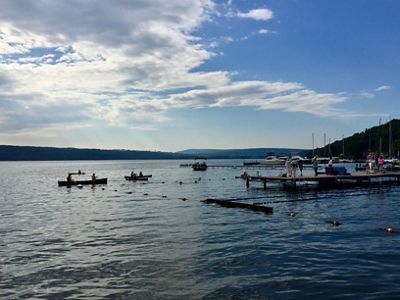
“The problem is not a quick one to solve,” says Women Swimmin’ participant and year-round Cayuga Lake swimmer Gail Steinhart. But as more people and more policymakers take up the work, it won’t be just individual swimmers and organizations such as Hospicare that will gain. New Yorkers across the state will be better able to count on the many benefits clean lakes bring to us all—not just safe water to drink but also the incalculable pleasures of a swim on a hot summer’s day.
